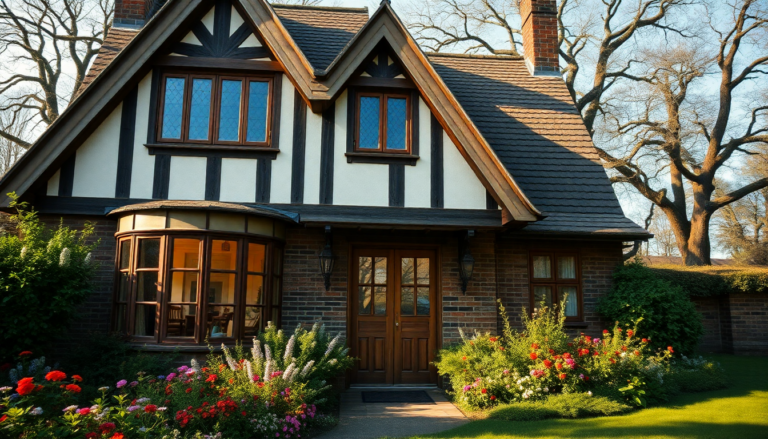Argomenti trattati
What defines Tudor-style architecture?
Tudor-style houses are unmistakable with their steeply pitched gable roofs and charming decorative wood trim. These homes evoke a sense of nostalgia and whimsy, reminiscent of quaint English cottages and grand country manors. Although they are becoming increasingly rare, their distinctive features make them stand out among neighboring architectural styles, such as Colonial homes. But what is it about Tudor-style architecture that continues to captivate the hearts of many?
The origins of Tudor-style homes in America
The Tudor architectural movement made its way to the United States in the mid-19th century and flourished until World War II. This style is a revival of English domestic architecture, particularly drawing inspiration from medieval and post-medieval designs between 1600 and 1700. According to experts, these homes were initially built to withstand northern climates with significant rainfall and snow, leading to their prevalence in the northern states, although they can be found across the country.
Characteristics of Tudor-style homes
A closer examination of Tudor-style houses reveals a variety of elements that contribute to their unique aesthetic. These homes often feature:
- Steeply pitched roofs: The rooflines are typically adorned with multiple overlapping gables, creating a dramatic silhouette.
- Brick exteriors: While brick is the primary material, decorative half-timbering often enhances the gables, giving the home a distinctive appearance.
- Asymmetrical facades: This design choice allows for creative interior layouts, providing flexibility for architects in planning room configurations.
These features not only add to the visual appeal but also reflect the functional aspects of Tudor design.
The interior charm of Tudor-style homes
The interiors of Tudor-style houses are just as captivating as their exteriors. Rich, dark wood accents, from ceiling beams to intricate wall paneling, evoke the feeling of an English manor. The asymmetrical design of the exterior often carries over into the interior layout, allowing for unique room shapes and sizes. This lack of strict symmetry enables architects to create diverse living spaces that are both functional and aesthetically pleasing.
Architectural details that stand out
One of the most striking features of Tudor-style homes is their windows. Tall and narrow, these windows often come with multiple panes, showcasing designs that range from rectangular to diamond-shaped. Large groupings of windows and picturesque oriel windows add to the home’s character and charm. Additionally, the front door typically features a round arch and is often framed by contrasting stone, enhancing the overall visual impact of the entrance.
The significance of Tudor chimneys
Chimneys in Tudor-style houses are another notable architectural element. They often feature decorative pots and unique extensions, creating a captivating focal point that adds to the home’s charm. These design elements reflect the craftsmanship and attention to detail characteristic of Tudor architecture.
The decline and revival of Tudor-style homes
Despite their popularity in the early 20th century, Tudor-style homes saw a decline after World War II as the focus shifted to more affordable housing options. However, their unique appeal has led to a resurgence in interest among buyers seeking historic homes. Interior designers are dedicated to restoring these properties, aiming to preserve their original beauty while infusing modern comforts.
Modern adaptations of Tudor design
Interior designer Shannon Eddings emphasizes the importance of maintaining original elements in Tudor homes. To replicate the cozy ambiance of classic Tudor design, she incorporates built-in benches and other thoughtful touches that honor the home’s history. By blending modern updates with traditional features, designers can create harmonious spaces that respect the architectural integrity of these homes.
A fairytale ending for Tudor-style houses
With their rich history and enchanting design, Tudor-style homes continue to capture the imagination. As more homeowners and designers commit to restoring these architectural gems, Tudor houses can once again shine with their original charm, proving that even in a modern world, there is room for a touch of fairytale magic in our living spaces.

